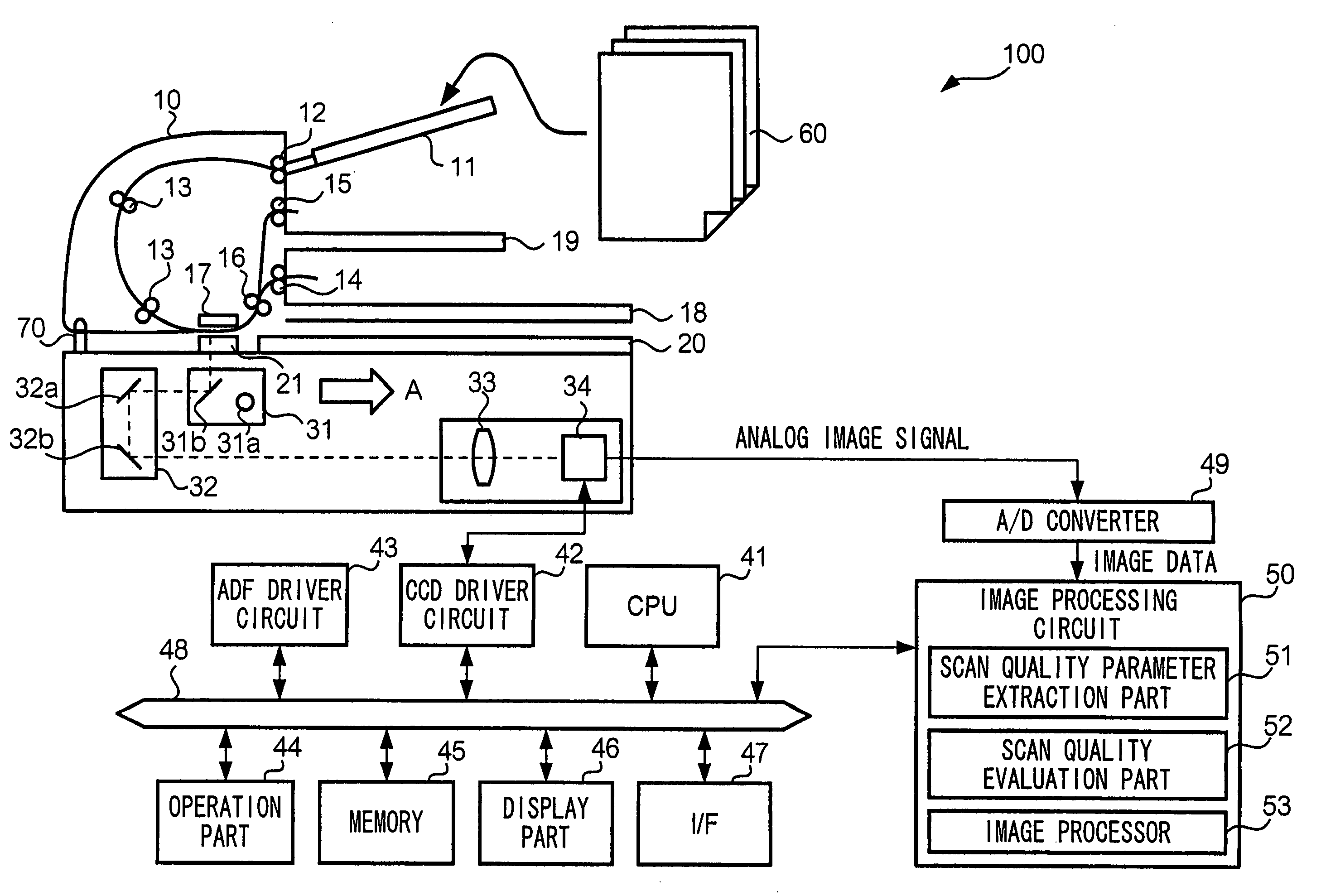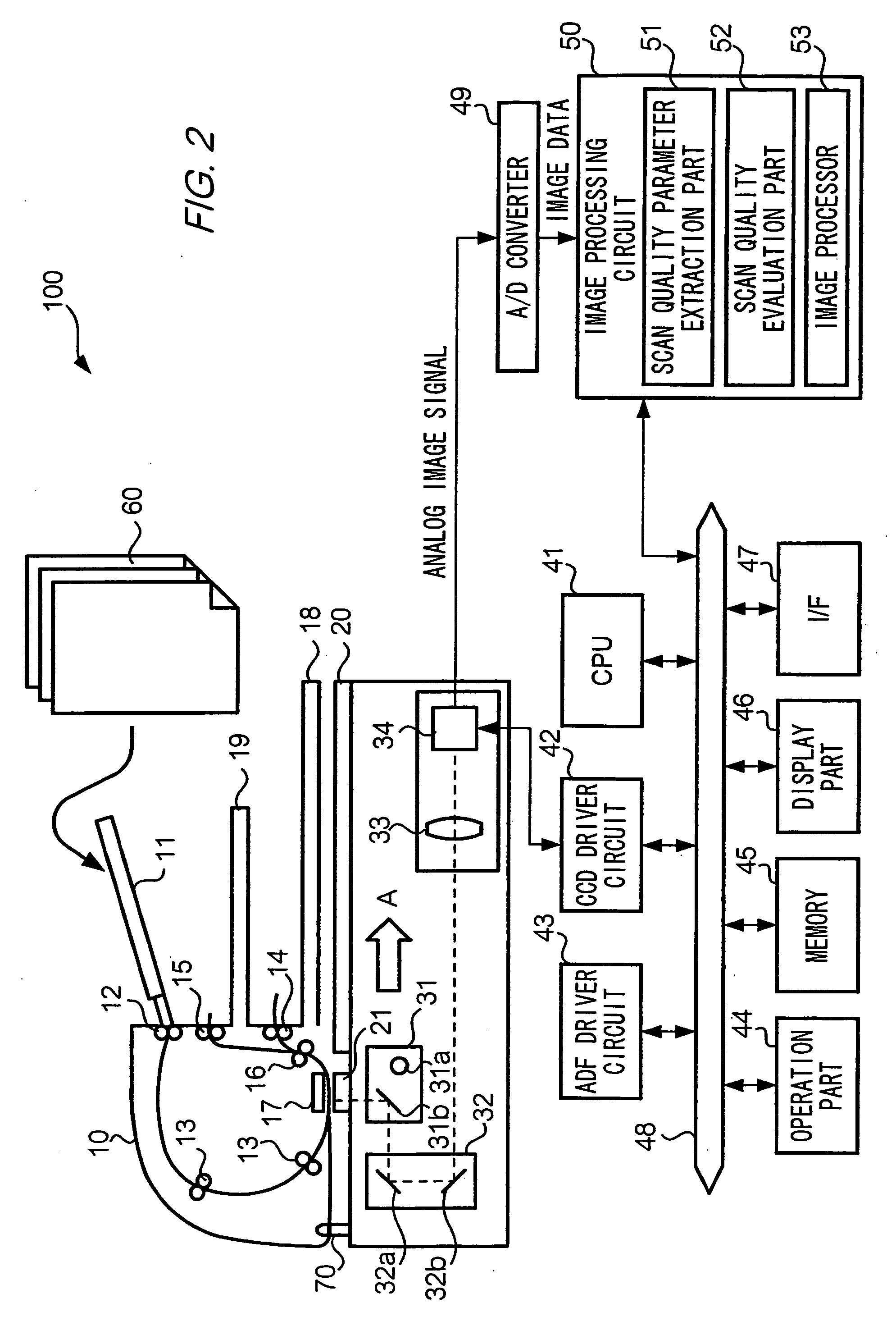Image reading apparatus
- Summary
- Abstract
- Description
- Claims
- Application Information
AI Technical Summary
Benefits of technology
Problems solved by technology
Method used
Image
Examples
first embodiment
[0076]FIG. 7 is a flowchart showing the operations of scanner 100 according to the first embodiment. FIG. 8 shows an example of a display that informs the user of scan error detection results. The user first puts on platen glass 20 a sheet from the multi-page document 60, and after performing an operation such as selection of the scan mode, gives an instruction for scan to scanner 100 to by pressing the start button. Then, in the interior of scanner 100, image data corresponding to document 60 is generated (Step S301).
[0077] Scanner 100 executes on the scanned image at least one of the above scan error detection algorithms (Step S302). In the case of detecting a scan error as a result of applying a scan error detection algorithm (Step S303: YES), a signal representing the occurrence of a scan error and the identifier of the scan error detection algorithm is output from scan quality evaluation part 52 to CPU 41, as already explained. When CPU 41 receives the signal indicating that a...
third embodiment
[0094] In the present embodiment, the quality of the scanned image is not explained from the point of either good or bad; an explanation is given form the point that the quality of the scanned image is presented by digitization. Scan quality evaluation part 52 is further equipped with a function for computing numerical values that represent the quality of the scanned image. Specifically, memory part 45 stores scan quality index conversion table TB3 for converting scan quality parameters that have been input from scan quality parameter extraction part 51 into numerical values representing scan quality (hereafter, “scan quality indices”).
[0095] FIGS. 12(a)-(c) show examples of scan quality index conversion tables TB3. Memory part 45 records one or more of such tables. In scan quality index conversion table TB3, identifiers for identifying types of scan quality parameters (FIG. 9(a) “skew angle”, (b) “C / A”, and (c) “gradation range”) and scan quality parameter values are stored in cor...
fourth embodiment
[0105] For the present embodiment, scanner 100 has functions to automatically correct the scanned image when a scan error occurred. Scanner 100 scans a document and generates image data corresponding to the document scanned. Scan quality parameter extraction part 51 applies the above scan error detect ion algorithms to the image data generated, and outputs to scan quality evaluation part 52 the scan quality parameters. The operations explained so far are similar to those of the first through third embodiments
[0106] In the present embodiment, when detecting a scan error, scan quality evaluation part 52 determines whether the scan error must be corrected. To this end, scan quality evaluation part 52 reads out a correctibility table TB4 from memory part 45. In correctibility table TB4, identifiers that specify scan error detection algorithms are stored in correspondence with flags that indicate whether the scan error must be corrected. Specifically, skew is correctable by applying rot...
PUM
 Login to View More
Login to View More Abstract
Description
Claims
Application Information
 Login to View More
Login to View More - R&D
- Intellectual Property
- Life Sciences
- Materials
- Tech Scout
- Unparalleled Data Quality
- Higher Quality Content
- 60% Fewer Hallucinations
Browse by: Latest US Patents, China's latest patents, Technical Efficacy Thesaurus, Application Domain, Technology Topic, Popular Technical Reports.
© 2025 PatSnap. All rights reserved.Legal|Privacy policy|Modern Slavery Act Transparency Statement|Sitemap|About US| Contact US: help@patsnap.com



